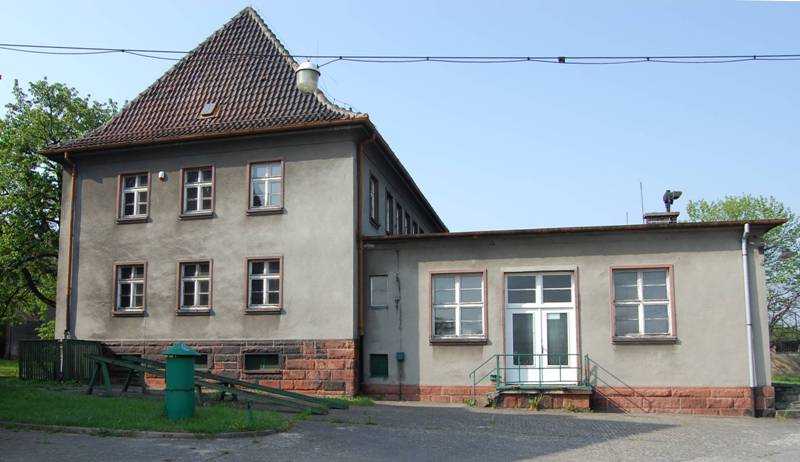Before Hitler and his armies attacked Polish territory in 1939 and the September campaign began, German implementation of its policy towards Poland took place on Polish soil, providing pretexts for accusing it of persecuting the German minority and making territorial claims. They became the main weapon in the Third Reich leader’s psychological warfare against the Polish state.
The first hostile initiatives against Poland, instigated by the leaders of Nazi policy, appeared in 1933, i.e. after Hitler came to power. From then on, the German minority living in the Second Polish Republic was mostly recruited for diversionary activities. The so-called V column formed clandestine Nazi organisations that caused national unrest. Polish counteractions were used by German propaganda as evidence of repression against the German population.
German provocations in 1939 took place especially in the Free City of Danzig (Gdansk) and in the border areas of Pomerania and Upper Silesia. After the Third Reich occupied Klaipėda in March 1939, V column demanded the annexation of Danzig to Hitler’s state. A so-called “war of nerves” began – Nazi militias appeared in the streets of the city, and provocative inscriptions were written at the entrances to establishments, such as: “Entry for dogs and Poles forbidden”.
In the following months, tensions escalated, with confrontations from the German side becoming more forceful and brutal. On 20 May, there was an armed attack on the Polish customs post in Kalthoff, and on 18 June, in Gdansk, German propaganda chief Josef Goebbels asserted in his speech: “The German city of Danzig will soon return to the Reich”. In August, the German militias again organised a larger action. This time it was an attempt to prevent Polish customs officers from performing their duties on the border from East Prussia. In addition, a number of incidents took place with the aim of intimidating and creating strong unrest in Polish society. For example, one Polish newspaper wrote: “On the Polish-Gdansk border a new incident of German provocation took place, namely shortly after 9 p.m. several series from machine guns and several shots from a rifle were fired from Sopot toward Orłowo without the slightest reason”.
In the summer of 1939, diversionary gangs carried out numerous attacks on border posts, railway stations and factories in the border strip – near Rybnik, Katowice, Koscierzyna and Mława. Meanwhile, time bombs were also placed in German schools and other premises and German properties were set on fire. These acts were intended to give the impression that hostile actions were being organised against the Germans in Poland in order to persecute them on a regular basis.
In the last week before the outbreak of war, German diversion reached deep into the country. There was an explosion of a time bomb and a destruction of the railway station in Tarnow. Around 20 people were killed as a result of the terrorist attack. The casualties were fewer because the train was late and there were fewer people at the station as that time. The attack was carried out by an unemployed locksmith. His mother was a German national, and his father was a Pole who had been killed in the First World War. The attacker was punished for his act. After the outbreak of war, he was probably executed.
In addition, on 26 August, a German military detachment broke into Poland at dawn from the Slovak side and attacked the Mosty railway station and the tunnel under the Jablunkov Pass. When the aggressors were captured by the Polish unit, the German commander Hanz Herzner, who led a group of about 30 men, stated that the war against Poland had begun. During their action, they fired at the Polish metallurgists going to work in Třinec. The bloodshed did not occur because, on the one hand, the German side cancelled the action but Herzner received the information too late, and, on the other hand, the Polish telephone operator on the Mosty railway reacted in time to the attack and called her superiors.
The most famous manifestation of the long list of German provocations in 1939 of the so-called false flag actions was the attack on the German radio station in Gliwice. This was carried out on 31 August by an SS unit (including criminal prisoners) dressed in Polish military uniforms. During the action, an uprising against the Germans was called for. The event is known in Polish historiography as the Gliwice provocation. It was prepared on Hitler’s orders by the head of the SD and security police Reinhard Heydrich. The action was commanded by Alfred Helmut Naujocks, an SD officer. The attack was launched with the slogan ‘Grossmuter gestorben’, or ‘Grandma died’. During the action, the Germans met some obstacles -the lack of a microphone and other technical problems. Only nine words spoken by the provocateurs reached the radio listeners: “Attention, this is Gliwice. The radio station is in Polish hands…”.
Hitler took advantage of the events in Gliwice to accuse Poland of invasion by issuing an ultimatum. This took place on the same day, i.e. at midnight on 31 August, just before the start of regular hostilities. The next day, i.e. on 1 September, in the Reichstag, on the other hand, he said: “On that day, for the first time, the Polish regular armed forces opened fire on our territory. Since 5.45 a.m. [sic] we have been responding with fire”.





